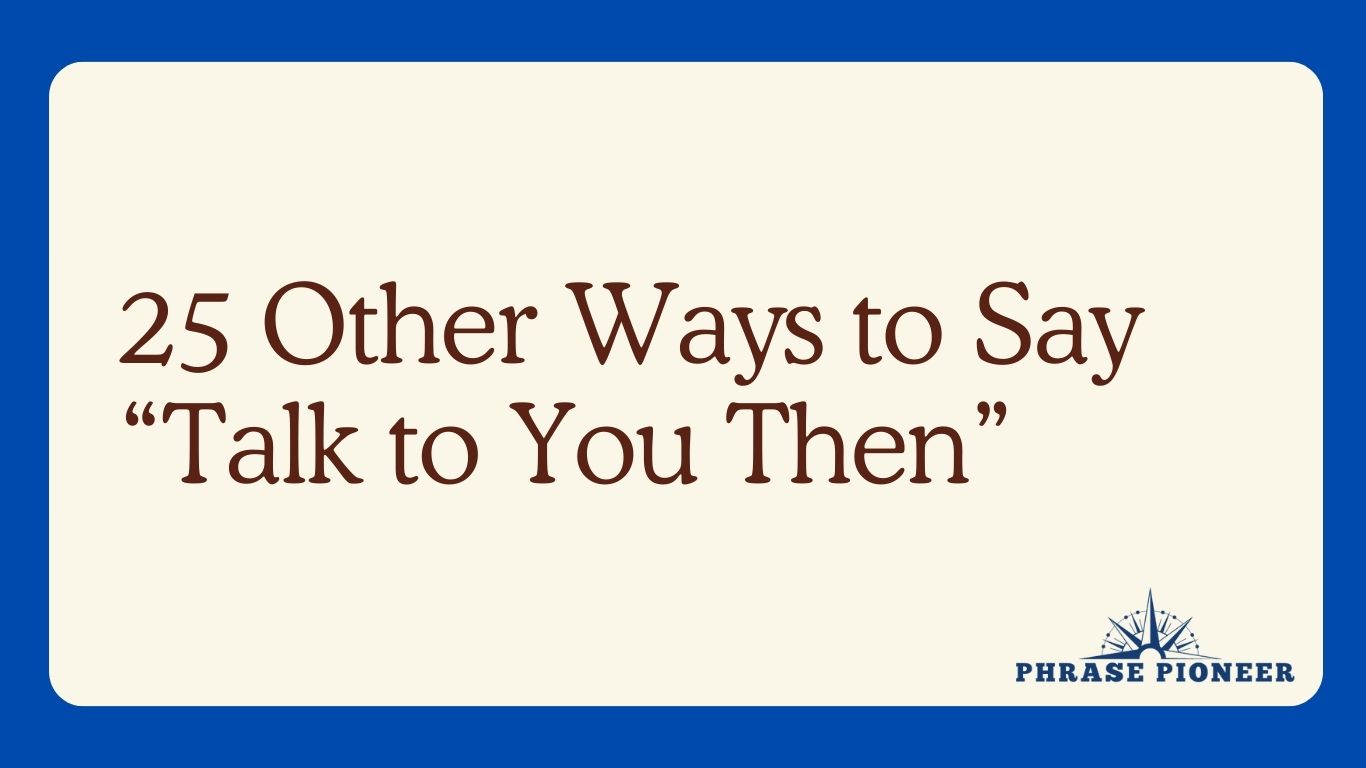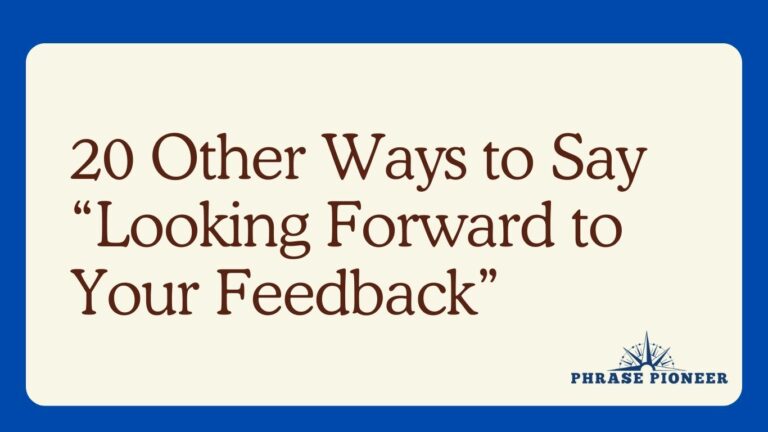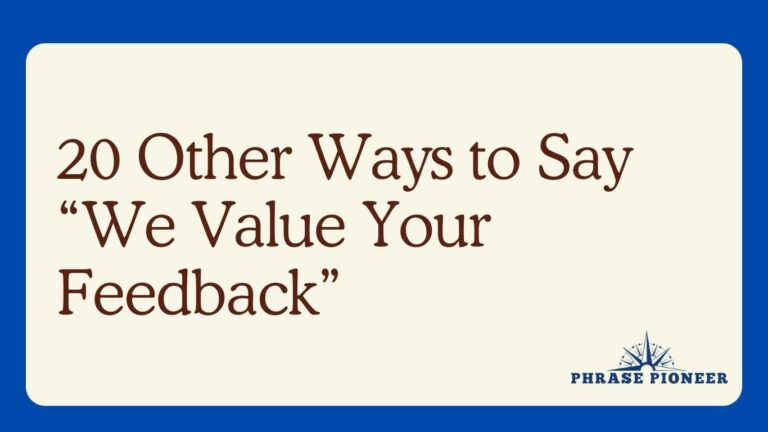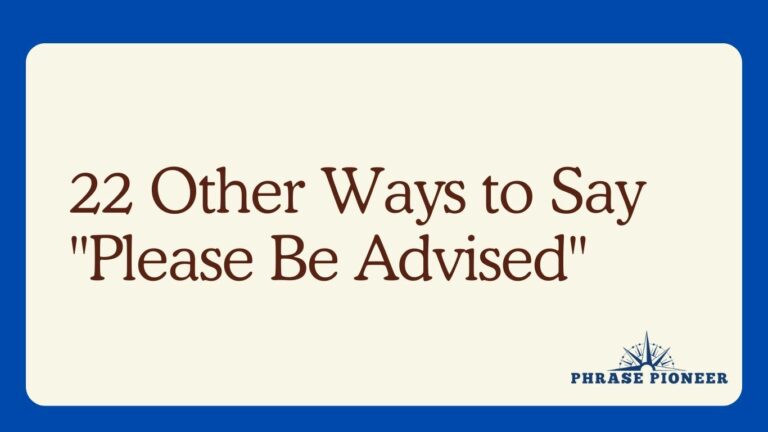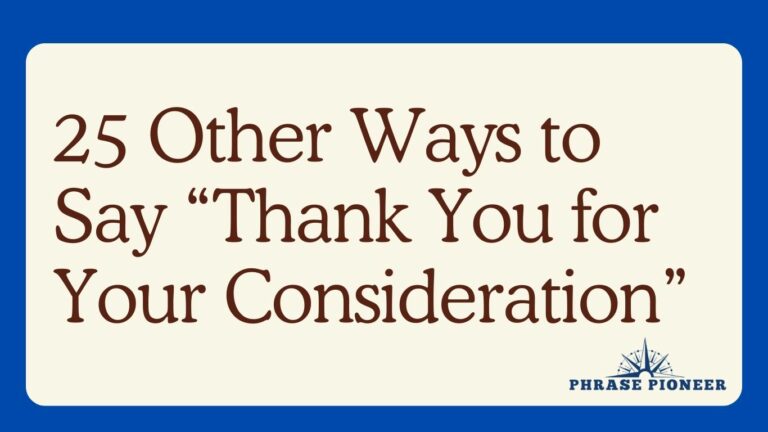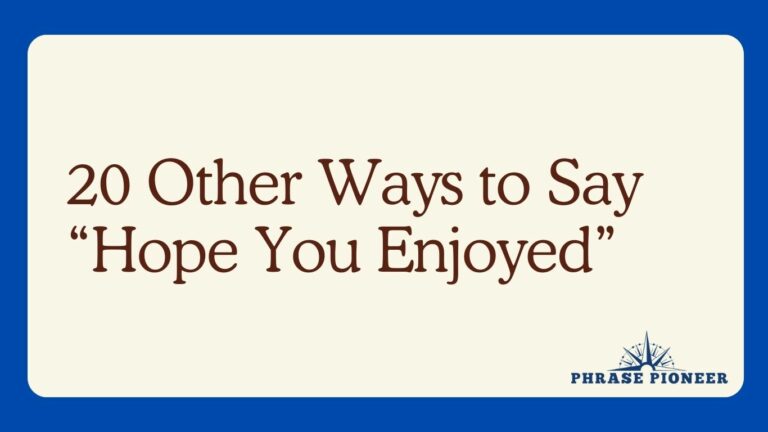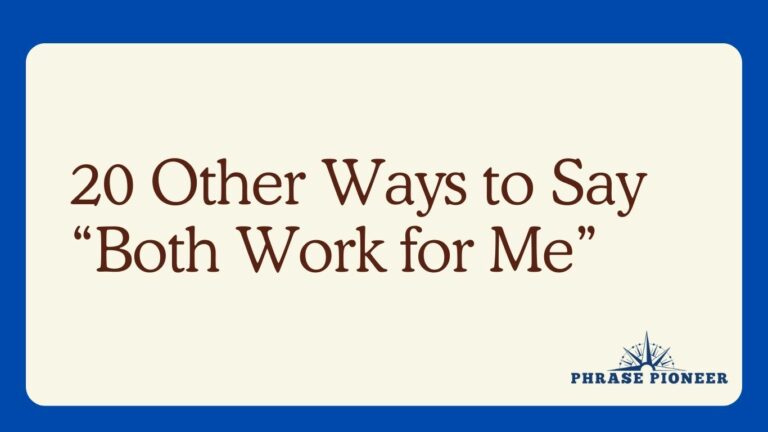25 Other Ways to Say “Talk to You Then”
The phrase “Talk to you then” is commonly used as a friendly way to end a conversation when a future discussion or meeting has been agreed upon.
Depending on the context and tone you wish to convey, you might opt for a different way to express anticipation for the next interaction. Here are 20 alternative ways to say “Talk to you then,” each with an example sentence and an explanation to guide their use.
Casual Farewells
- Catch you later
- Example: “So we’re meeting Friday night – catch you later!”
- Explanation: A casual and laid-back way to say goodbye, implying that you will speak again or meet at the specified time.
- See you on the flip side
- Example: “Our plans are all set for next weekend. See you on the flip side!”
- Explanation: A playful, informal goodbye often used among friends to express seeing each other next time.
- Until our next chat
- Example: “I’m glad we sorted everything out. Until our next chat!”
- Explanation: A warm way to end a conversation with the expectation of talking again.
- Looking forward to our catch-up
- Example: “I have so much to tell you about my trip. Looking forward to our catch-up!”
- Explanation: Expresses anticipation for the future conversation and the exchange of news or stories.
- Until we speak again
- Example: “Your proposal sounds promising. Until we speak again, take care!”
- Explanation: A polite way to conclude a conversation while showing eagerness for the next.
Confirming Next Contact
- Speak soon
- Example: “All the details are clear, so speak soon?”
- Explanation: A light and concise way to confirm an upcoming conversation.
- Looking forward to speaking
- Example: “Looking forward to speaking on Monday and finalizing the details.”
- Explanation: Anticipates the next time you will talk, often referencing a specific future time or date.
- Chat with you then
- Example: “The concert starts at seven, right? Chat with you then.”
- Explanation: A direct and friendly replacement that confirms the next time you expect to talk.
- Let’s touch base then
- Example: “We’ll go over the figures after your review. Let’s touch base then.”
- Explanation: Suggests a mild and somewhat formal commitment to follow up at a later date.
- We’ll connect again soon
- Example: “There’s much to discuss after the weekend. We’ll connect again soon.”
- Explanation: A slightly formal assurance of future contact, often used in professional contexts.
Anticipatory Goodbyes
- Next time we chat
- Example: “Save some stories for our next call, okay? Next time we chat, I want to hear everything.”
- Explanation: A friendly way to show enthusiasm for the next conversation with an interest in what will be shared.
- We’ll talk more later
- Example: “There’s still a lot to cover. We’ll talk more later, alright?”
- Explanation: Indicates there’s more to discuss and sets the stage for a follow-up conversation.
- Looking forward to our next conversation
- Example: “It’s always a pleasure exchanging ideas with you. Looking forward to our next conversation.”
- Explanation: To be used when the anticipation for future discussions is based on enjoying previous ones.
- Can’t wait to hear more
- Example: “Your project sounds intriguing; can’t wait to hear more next time.”
- Explanation: Shows excitement and eagerness to learn more about a particular topic in the next exchange.
- Talk more soon
- Example: “Let’s iron out those plans later, talk more soon?”
- Explanation: An informal and suggestive way to conclude the current discussion with a hint at continuing it soon.
Formal Sign-Offs
- Until our subsequent discussion
- Example: “Your input is very valuable to us. Until our subsequent discussion, thank you for your time.”
- Explanation: A formal and polite way to indicate a planned follow-up conversation.
- Awaiting our next meeting
- Example: “We have a lot to strategize. Awaiting our next meeting with interest.”
- Explanation: Conveys that there’s an expectation as well as eagerness for the information or decisions that the next meeting will bring.
- Let us reconvene then
- Example: “I believe that covers everything for today. Let us reconvene then.”
- Explanation: A more formal and structured method of setting up a next meeting or conversation.
- Look forward to our continued dialogue
- Example: “Your perspectives are insightful. I look forward to our continued dialogue.”
- Explanation: Expresses respect for the ongoing conversation and the desire to maintain it.
- Until our paths cross again
- Example: “Your contributions are much appreciated. Until our paths cross again, best regards.”
- Explanation: A dignified and respectful way to say goodbye when expecting to communicate again.
- Another chat awaits
- Example: “Your proposal has peaked my interest. Another chat awaits!”
- Explanation: A phrase that’s a bit literary and implies that future conversations are something to be awaited with anticipation.
- Eager for our next discussion
- Example: “The progress is excellent. Eager for our next discussion!”
- Explanation: Indicates enthusiasm for continuing the discussion and discovering what further developments may occur.
- We’ll catch up soon
- Example: “You have an interesting viewpoint on this. We’ll catch up soon to explore further.”
- Explanation: Used to express a desire to delve deeper into the conversation at a later date, with a casual undertone.
- Let’s continue this conversation later
- Example: “This is an exciting opportunity for us. Let’s continue this conversation later.”
- Explanation: Implies that the conversation is not yet complete and will be resumed in the future.
- We’ll pick this up again
- Example: “We’ll pick this up again on our call next week. Take care!”
- Explanation: Suggests putting a temporary hold on the topic with clear intentions to revisit it later.
Each of these expressions conveys a different nuance and level of formality.
By choosing the one that best aligns with your conversation and relationship with the recipient, you can effectively communicate your anticipation for future interactions in a personalized and engaging way.

